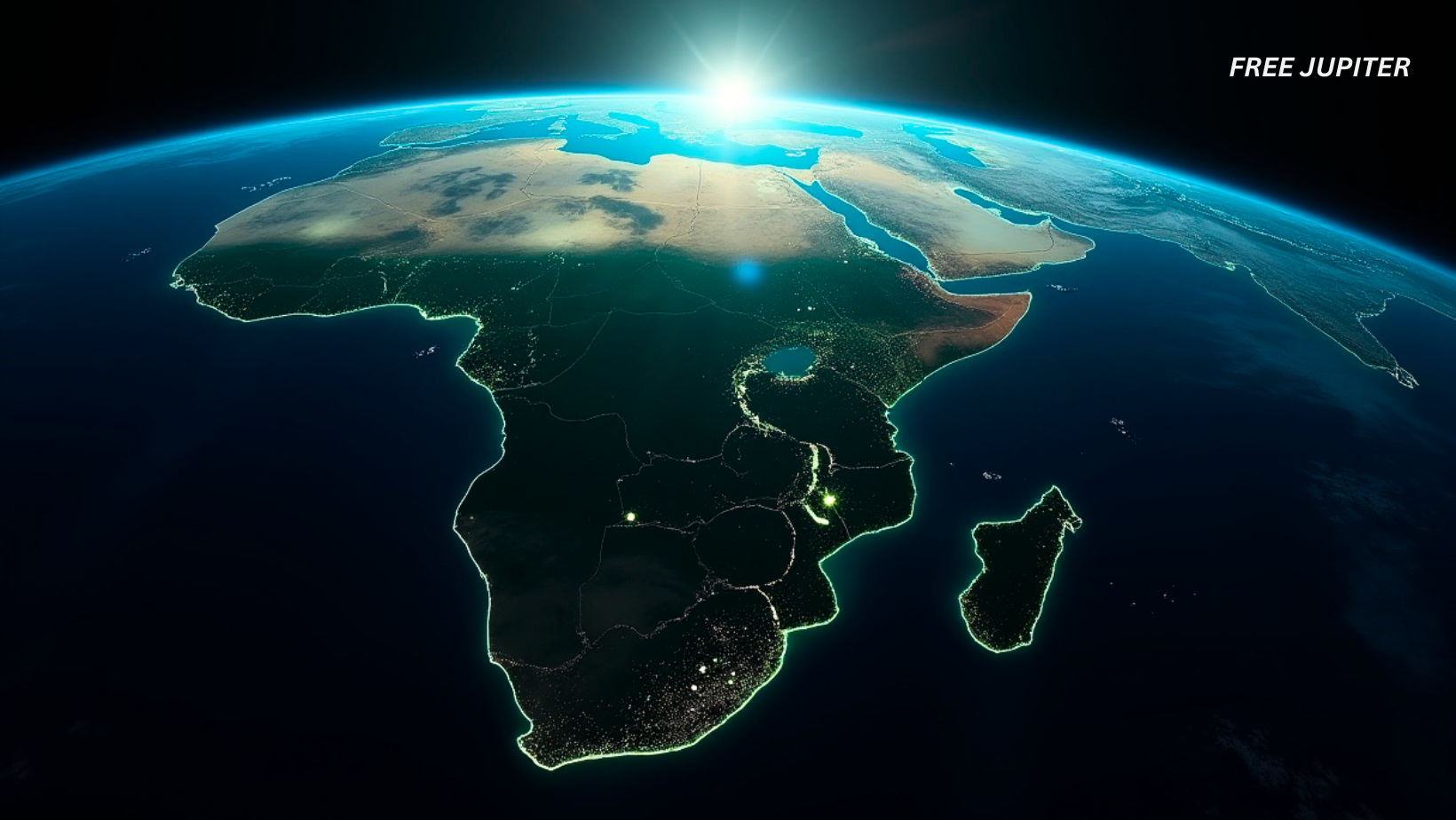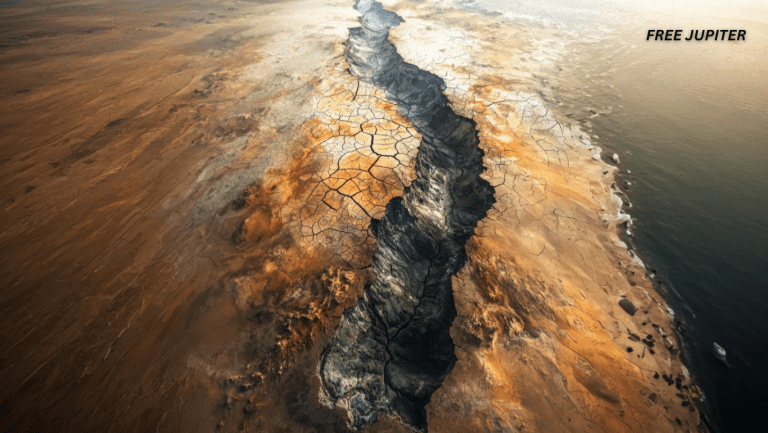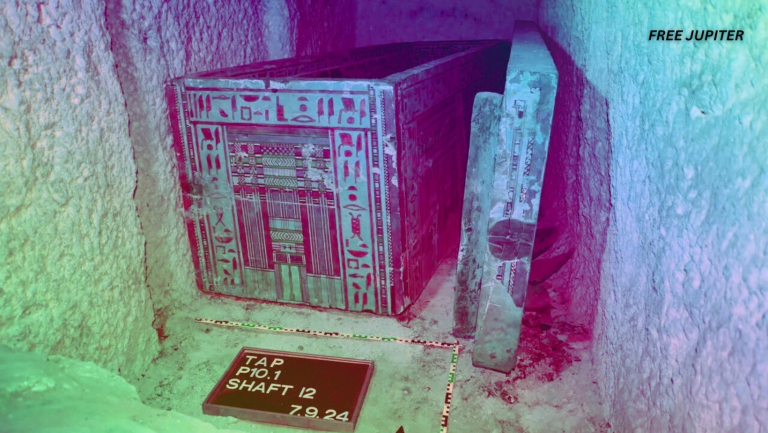Beneath the surface of our planet, hidden deep within the Earth, two colossal and mysterious structures have been discovered. These massive formations, buried under Africa and the Pacific Ocean, occupy nearly six percent of Earth’s entire volume. Despite their enormous size, their exact composition and origin remain unknown.
Scientists have been aware of these structures for some time, but they remain one of the greatest geological mysteries. Unlike mountains or ocean trenches that can be observed directly, these underground giants are buried thousands of kilometers beneath the Earth’s surface. Their presence has only been detected through indirect means, primarily seismic waves generated by earthquakes. These waves travel at different speeds depending on the material they pass through, allowing scientists to infer the existence of these massive underground anomalies.
One of the most intriguing aspects of these structures is their density. Seismic studies show that waves slow down when passing through them, indicating that the material they are made of differs significantly from the surrounding mantle. This suggests that these structures could be composed of elements not commonly found in Earth’s interior. However, without direct access, their exact composition remains speculative.
Another mystery surrounding these formations is their stability. They have remained largely unchanged for billions of years despite the constant movement of Earth’s mantle. While tectonic plates shift and continents drift over time, these structures have persisted, hinting at their deep-rooted connection to the planet’s history. Some theories suggest that they may play a role in driving mantle plumes, which are responsible for volcanic activity and the formation of islands like Hawaii.
The Unexplored Depths of Earth
While much attention is given to the vastness of space, some of the greatest enigmas exist right beneath our feet. The core of the Earth, still largely unexplored, holds many secrets. Scientists continue to investigate these massive underground structures, which defy easy explanation.
Theories on Their Origin
One theory suggests that these formations are layers of oceanic crust that have accumulated over billions of years. However, another hypothesis presents an even more intriguing possibility. Some researchers propose that these structures are remnants of an ancient planet that collided with Earth around 4.5 billion years ago.
The Size and Scale of the Structures
The structure beneath Africa, called Tuzo, is believed to be around 800 kilometers (497 miles) tall. To put that into perspective, that is about 90 times the height of Mount Everest. The immense scale of these formations makes their study particularly challenging.
Read more: Earth’s Core Is Leaking, And Scientists Have Finally Figured Out Why
Challenges in Studying Earth’s Core
Studying Earth’s core presents significant challenges due to its extreme depth and harsh conditions. Direct observation is impossible with current technology, making indirect methods the only viable approach.
Depth and Accessibility Issues
The Earth’s core lies thousands of kilometers beneath the surface, making direct exploration unattainable. The deepest hole ever drilled, sometimes referred to as the “entrance to hell,” reached only 12,263 meters (40,230 feet). This record-breaking attempt barely scratched the surface and was nowhere near reaching the deeper layers of the planet.
Extreme Temperature and Pressure
The environment within the Earth’s core is incredibly hostile. Temperatures can exceed 5,000 degrees Celsius (9,000 degrees Fahrenheit), and pressures are millions of times greater than those at the surface. These conditions make it impossible for any known drilling technology or human-made equipment to survive for extended periods at such depths.
Limitations of Seismic Tomography
Since direct access is impossible, scientists rely on seismic tomography to study the core. This method analyzes how seismic waves from earthquakes travel through different layers of the Earth. Variations in wave speed provide clues about the composition and density of these layers. However, seismic tomography has its limitations—it can only offer indirect evidence and cannot provide precise details about the chemical makeup of the core or the mysterious underground structures.
Technological Constraints
While advancements in science and engineering continue, there are still no tools capable of drilling into or directly sampling the core. Some researchers have proposed using neutrinos—subatomic particles that pass through matter—to gather more information about the Earth’s interior. However, such methods are still in the early stages of development.
Despite these challenges, scientists continue to refine their techniques and theories to uncover more about Earth’s hidden depths. As technology advances, new methods may emerge, bringing us closer to solving one of the planet’s greatest mysteries.
Read more: That Asteroid Threatening to Hit The Earth Probably Won’t Anymore
Seismic Tomography: Mapping the Earth’s Interior
Instead, scientists rely on seismic tomography, a technique that analyzes how energy waves travel through the Earth. When earthquakes occur, these waves move through different layers at varying speeds, depending on the density and composition of the material. By studying these patterns, geologists can create a map of Earth’s interior.
Discovery of Large Low Shear Velocity Provinces (LLSVPs)
Through this method, the two massive underground structures were detected. Known as large low shear velocity provinces (LLSVPs), these formations slow down seismic waves, suggesting that they are made of a different material than the surrounding mantle. Despite this discovery, the true nature of these structures remains a mystery.
The Giant Impact Hypothesis
Some scientists believe these formations could be linked to an ancient planetary collision. This theory, called the “giant impact hypothesis,” proposes that a Mars-sized planet, named Theia, crashed into Earth billions of years ago. The collision is thought to have contributed to the formation of the Moon. Some fragments of Theia may have sunk into the Earth, eventually settling near the core and forming these two massive structures.
Read more: Scientists Trapped in Antarctica Plead For Help as Violence Breaks Out At Base
Unanswered Questions and Ongoing Research
Although seismic tomography provides valuable insights, it cannot determine the exact composition of the LLSVPs. Further research is needed to confirm whether they are remnants of Theia or something else entirely. These mysterious formations continue to puzzle scientists, offering a glimpse into the ancient history of our planet.
The Importance of This Discovery
Experts have been investigating the area for decades, but there is still no way of knowing for sure what these two giant blobs are. However, studies into Theia have provided important insights into how this possible collision may have influenced plate tectonics and mantle motion—processes crucial for shaping the planet as it exists today.
A Reminder of Earth’s Hidden Mysteries
This discovery serves as a reminder that there is still so much to learn about our world and its origins. Recent research has even challenged our understanding of Earth’s continents. While many are taught that there are seven continents—Africa, Antarctica, Asia, Oceania, Europe, North America, and South America—new findings suggest that this may not be the case after all. As scientific exploration continues, our knowledge of Earth and its history will only expand further.










